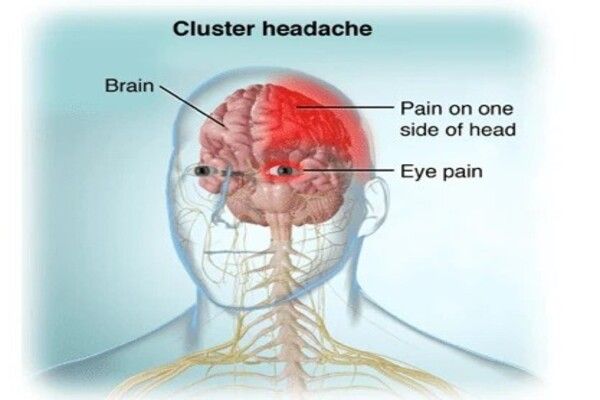Cluster headache sufferers may be more than three times more likely to have other medical conditions such as heart disease, mental disorders, and other neurologic diseases, according to a study published in the online issue of Neurology®, the American Academy of Neurology’s medical journal.
Cluster headaches are brief but excruciatingly severe headaches that can occur multiple days or even weeks in succession. The headaches might last anywhere from 15 minutes to three hours.
“Around the world, headaches have an incredibly negative impact on people’s quality of life, both economically and socially,” said study author Caroline Ran, PhD, of the Karolinska Institutet in Stockholm, Sweden. “Our results show that people with cluster headaches not only have an increased risk of other illnesses, but those with at least one additional illness missed four times as many days of work due to sickness and disability than those with just cluster headaches. They also have a higher chance of a long-term absence from work.”
Our results show that people with cluster headaches not only have an increased risk of other illnesses, those with at least one additional illness missed four times as many days of work due to sickness and disability than those with just cluster headaches. They also have a higher chance of a long-term absence from work.
Caroline Ran
The study included 3,240 persons with cluster headaches aged 16 to 64 in Sweden, who were compared to 16,200 people of similar age, gender, and other characteristics. The majority were men, as is normal with cluster headaches.
Researchers analyzed work records and disability payouts to calculate how many days people were absent from work each year owing to illness or disability. Among patients experiencing cluster headaches, 92%, or 2,977, had at least one other ailment. Of individuals who did not have cluster headaches, 78%, or 12,575, had two or more diseases.

Women experienced more extra illnesses than males with cluster headaches (96% versus 90%). People with cluster headaches missed nearly twice as many days of work owing to illness and disability, with an average of 63 days compared to 34 days for those without cluster headaches.
People with cluster headaches with at least one additional sickness missed four times more days than people with cluster headaches who did not have an additional illness.
“Increasing our understanding of the other conditions that affect people with cluster headaches and how they impact their ability to work is very important,” Ran said. “This information can help us make decisions on treatments, prevention and prognoses.”
A limitation of the study was that information on personal data, such as smoking, alcohol consumption, and BMI, which could affect the occurrence of diseases, was not available.
















